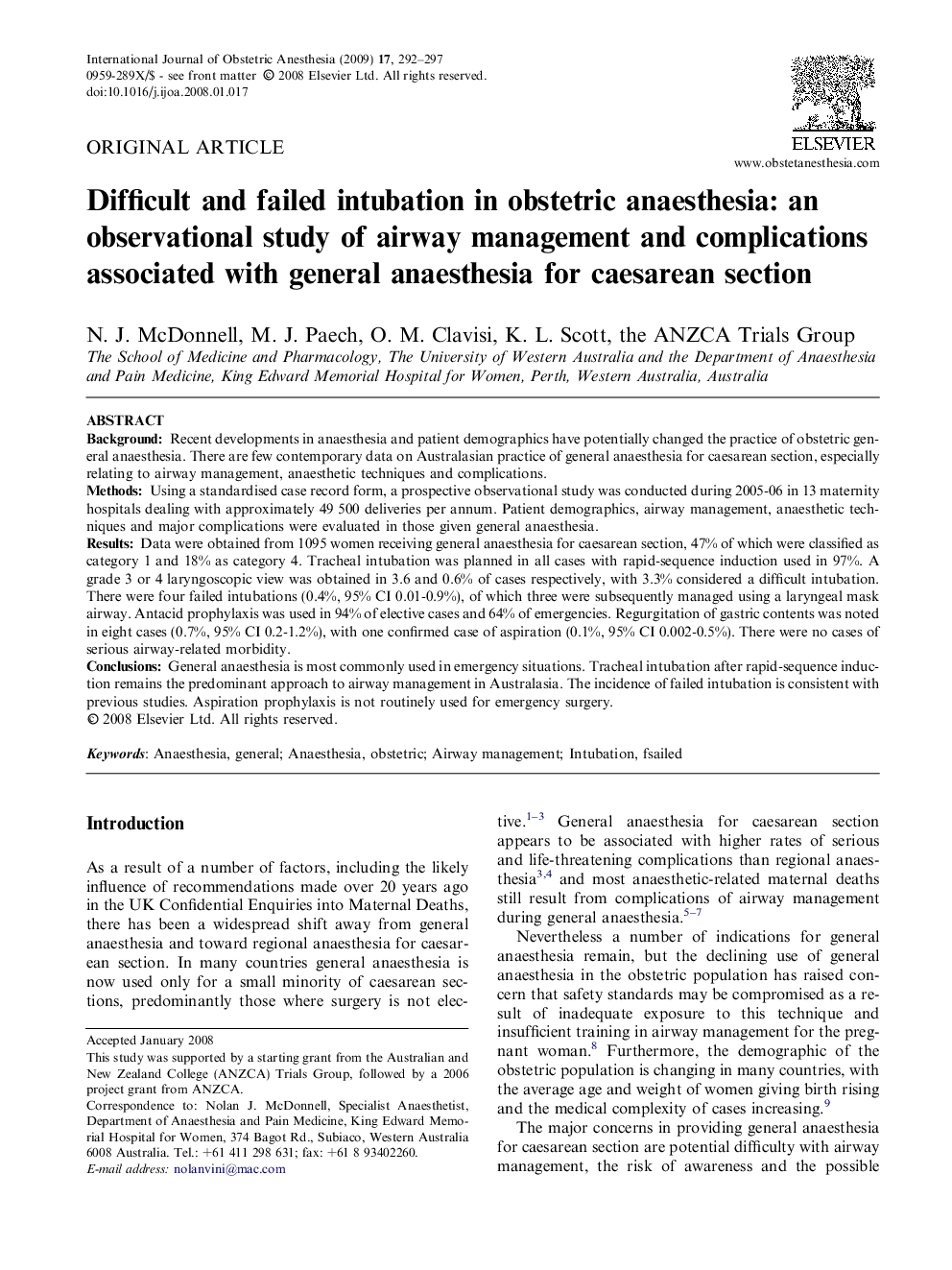| کد مقاله | کد نشریه | سال انتشار | مقاله انگلیسی | نسخه تمام متن |
|---|---|---|---|---|
| 2758356 | 1567547 | 2008 | 6 صفحه PDF | دانلود رایگان |

BackgroundRecent developments in anaesthesia and patient demographics have potentially changed the practice of obstetric general anaesthesia. There are few contemporary data on Australasian practice of general anaesthesia for caesarean section, especially relating to airway management, anaesthetic techniques and complications.MethodsUsing a standardised case record form, a prospective observational study was conducted during 2005-06 in 13 maternity hospitals dealing with approximately 49 500 deliveries per annum. Patient demographics, airway management, anaesthetic techniques and major complications were evaluated in those given general anaesthesia.ResultsData were obtained from 1095 women receiving general anaesthesia for caesarean section, 47% of which were classified as category 1 and 18% as category 4. Tracheal intubation was planned in all cases with rapid-sequence induction used in 97%. A grade 3 or 4 laryngoscopic view was obtained in 3.6 and 0.6% of cases respectively, with 3.3% considered a difficult intubation. There were four failed intubations (0.4%, 95% CI 0.01-0.9%), of which three were subsequently managed using a laryngeal mask airway. Antacid prophylaxis was used in 94% of elective cases and 64% of emergencies. Regurgitation of gastric contents was noted in eight cases (0.7%, 95% CI 0.2-1.2%), with one confirmed case of aspiration (0.1%, 95% CI 0.002-0.5%). There were no cases of serious airway-related morbidity.ConclusionsGeneral anaesthesia is most commonly used in emergency situations. Tracheal intubation after rapid-sequence induction remains the predominant approach to airway management in Australasia. The incidence of failed intubation is consistent with previous studies. Aspiration prophylaxis is not routinely used for emergency surgery.
Journal: International Journal of Obstetric Anesthesia - Volume 17, Issue 4, October 2008, Pages 292–297